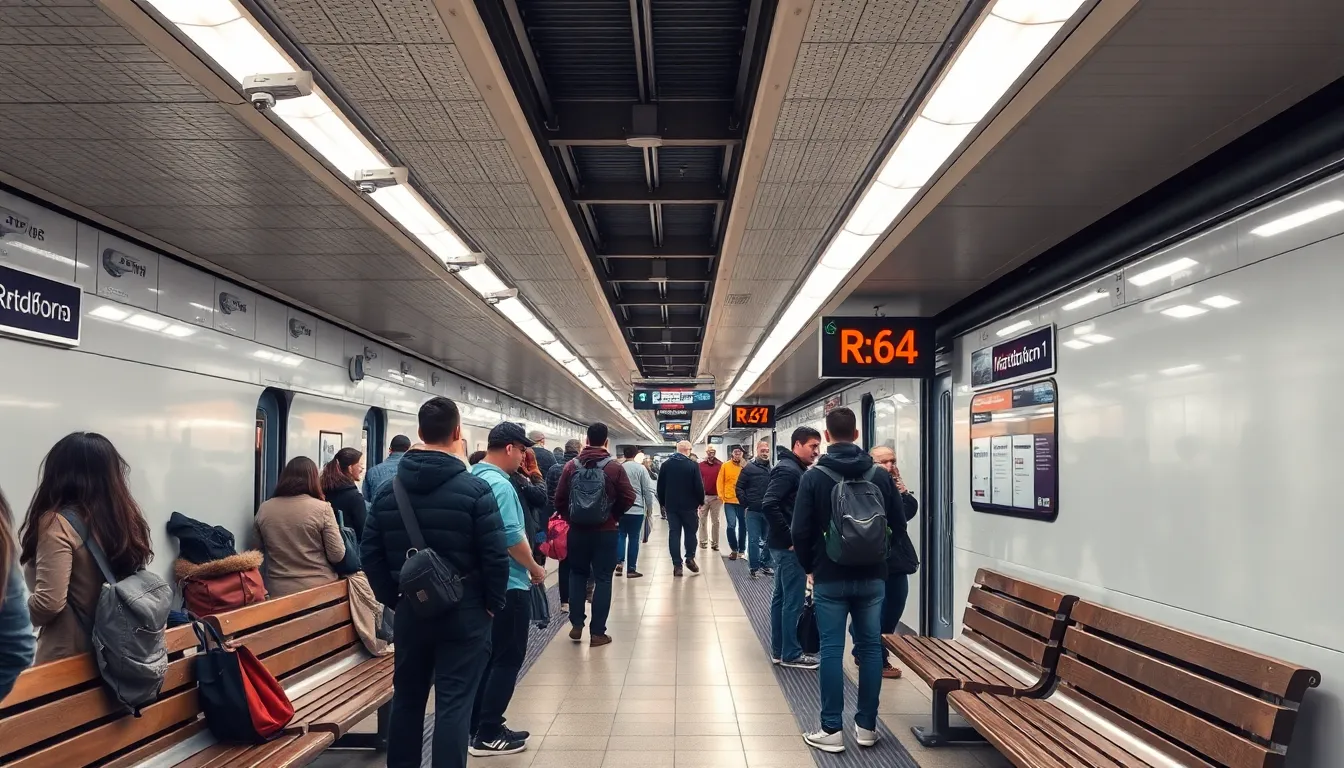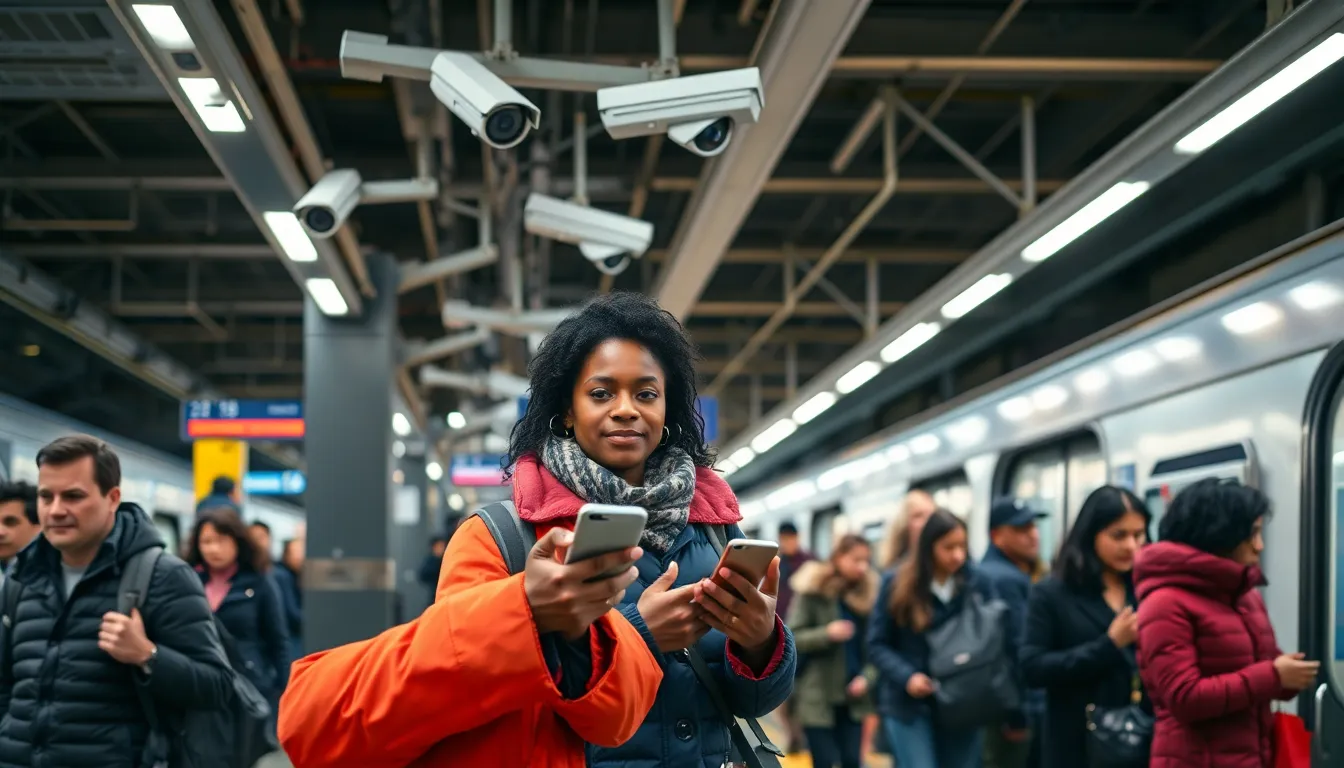Table of Contents
TogglePublic transit serves as a lifeline for millions, connecting communities and providing essential mobility. However, safety concerns often overshadow its benefits, making it crucial to address the various risks passengers face daily. From crowded buses to late-night train rides, ensuring a secure environment is paramount for both riders and transit authorities.
As urban populations grow, the demand for reliable and safe public transportation increases. Riders deserve to feel confident while commuting, and understanding safety protocols can empower them to make informed choices. This article dives into the essential aspects of public transit safety, exploring measures that can enhance security and promote a safer commuting experience for everyone.
Overview of Public Transit Safety
Public transit safety encompasses various measures designed to protect passengers during their commutes. Robust safety protocols include surveillance systems, emergency response training, and maintenance checks, ensuring environments are secure.
Surveillance systems, such as cameras and monitoring, deter criminal activity and enhance safety. Training programs for staff cover emergency procedures, equipping employees to handle situations effectively. Regular maintenance checks on vehicles and infrastructure reduce breakdowns and accidents.
Safety also hinges on the awareness of passengers. Educating riders about their surroundings and providing information on reporting suspicious behaviors contributes to a collective safety culture. Public transit authorities implement campaigns to promote vigilance among users.
Furthermore, collaboration between transit agencies and law enforcement agencies strengthens safety measures. Joint efforts streamline communication and response during emergencies, fostering a more secure commuting atmosphere.
Statistical data highlights safety’s importance. According to the National Transit Database, public transit systems report incidents per million passenger trips, emphasizing ongoing safety concerns. Addressing these issues enhances public confidence in using transit services.
Key Safety Concerns in Public Transit

Public transit safety faces several challenges that require targeted strategies to ensure a secure commuting environment. Addressing crime prevention and infrastructure maintenance is crucial for enhancing passenger security.
Crime Prevention Strategies
Crime prevention strategies play a vital role in ensuring safety on public transit systems. Implementing surveillance measures, such as high-definition cameras, deters criminal behavior. Deploying well-trained transit staff enhances security, as employees can monitor passenger activity and respond to incidents promptly. Establishing partnerships with local law enforcement agencies improves communication and facilitates quick responses to emergencies. Educating riders about safety protocols, including reporting suspicious behavior, fosters a proactive safety culture among passengers. Programs aimed at community engagement, such as safety workshops, can further bolster public awareness and cooperation in crime prevention efforts.
Infrastructure and Maintenance Issues
Infrastructure and maintenance issues significantly impact public transit safety. Aging facilities can pose hazards, influencing the safety of daily operations. Routine maintenance checks help identify and address potential risks, maintaining the integrity of transit systems. Upgrading equipment, including trains and buses, ensures reliable operations and reduces breakdown incidents. Additionally, well-lit and clean stations encourage safer environments, as proper lighting deters criminal activity and enhances passenger comfort. Implementing accessibility features also supports individuals with disabilities, ensuring all passengers can navigate the transit system safely. Regular assessments of infrastructure contribute to sustained safety improvements in public transit networks.
Role of Technology in Enhancing Safety
Technology plays a significant role in improving public transit safety. Innovations enhance surveillance, communication, and overall incident response, creating safer travel environments for passengers.
Surveillance Systems
High-definition surveillance systems significantly boost safety in public transit. Cameras installed in vehicles and stations deter criminal activity, providing real-time monitoring. These systems allow transit agencies to review footage and identify potential threats swiftly. Additionally, video analytics software enhances surveillance by detecting unusual behavior patterns, alerting security personnel to suspicious activities. Smart sensors integrated with surveillance units can notify staff of emergencies, ensuring prompt responses. This technological integration fosters a secure atmosphere, enhancing passenger confidence in using transit services.
Communication Tools
Effective communication tools are essential for immediate incident reporting and response in public transit. Two-way radios enable staff to maintain constant contact with dispatch centers, facilitating faster decision-making during emergencies. Transit agencies increasingly use mobile applications to inform riders of safety alerts, service changes, and emergency protocols. Social media platforms serve as vital channels for disseminating real-time information, enabling agencies to reach a wide audience quickly. Furthermore, text message alerts and notification systems keep passengers informed about delays or safety concerns, enhancing situational awareness. These advancements ensure that communication remains timely and efficient, strengthening coordination among transit staff and law enforcement during critical situations.
Safety Regulations and Policies
Safety regulations and policies play a crucial role in ensuring public transit security. Transit authorities implement comprehensive safety frameworks that govern operations and outline protocols for various situations. These regulations often adhere to federal guidelines, such as those established by the Federal Transit Administration (FTA) and the Department of Transportation (DOT).
Key Safety Regulations
- Americans with Disabilities Act (ADA): Mandates accessibility for individuals with disabilities across public transit systems, ensuring equitable access to services.
- Transit Agency Safety Plans: Requires transit agencies to develop, adopt, and implement safety plans that include accident prevention strategies and risk management techniques.
- Incident Reporting Requirements: Establishes protocols for reporting safety incidents, promoting transparency and accountability in transit operations.
Safety Policies
- Emergency Preparedness Plans: Outlines procedures for responding to emergencies, including natural disasters, accidents, and criminal activity, ensuring a timely and coordinated response.
- Staff Training and Certification: Mandates ongoing training programs for transit personnel, with a focus on crisis management and passenger assistance.
- Passenger Safety Awareness: Implements campaigns to educate riders about safe transit practices, encouraging them to report suspicious behavior.
Compliance and Oversight
Regular audits and assessments ensure compliance with safety regulations and policies. Agencies conduct internal reviews and collaborate with external organizations to evaluate safety performance. These initiatives promote a culture of safety and continuous improvement, thereby enhancing public confidence in transit systems.
Collaboration with Law Enforcement
Transit agencies often establish formal partnerships with local law enforcement to enhance safety. Joint safety initiatives and active communication channels enable effective response strategies during emergencies. This collaboration strengthens the overall security framework of public transit networks.
Technological Integration in Policies
Advancements in technology play a significant role in modern safety policies. Integration of real-time monitoring systems and data analytics improves incident response times and enhances overall safety management. Policies promoting the adoption of new technologies empower transit agencies to maintain secure environments efficiently.
Public transit safety remains a critical concern as urban populations continue to grow. Implementing robust safety measures and leveraging technology can significantly enhance the security of transit environments. By fostering a culture of vigilance among passengers and ensuring effective collaboration between transit agencies and law enforcement, communities can create safer commuting experiences. Ongoing assessments and upgrades to infrastructure are essential for addressing potential risks. Prioritizing safety not only boosts public confidence in transit services but also encourages more individuals to utilize these vital transportation options. Ultimately, a collective commitment to safety ensures that public transit remains a reliable and secure means of mobility for everyone.




